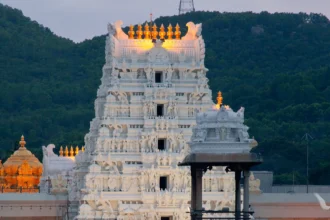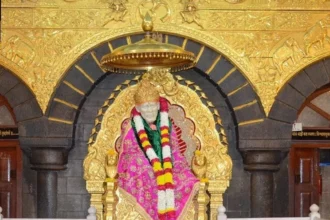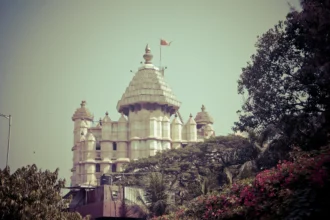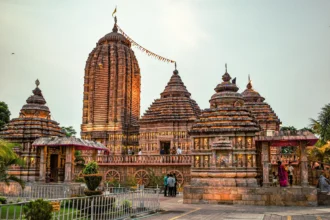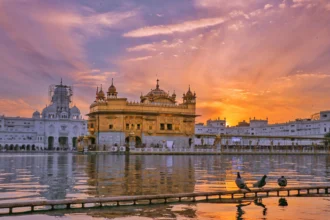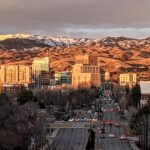Deep in the Kangra Valley of Himachal Pradesh, where the Dhauladhar ranges cast their reflections across sapphire waters, a hauntingly beautiful sight emerges—but only for a few months each year.
The Bathu Ki Ladi temples, often called India’s “Atlantis of the North,” rise from the waters of the Maharana Pratap Sagar reservoir like stone spires recalling forgotten legends. Shrouded in mystery, submerged in myth, and cloaked in centuries-old architecture, these temples are not just a sight—they’re a story. A story that appears, disappears, and demands to be rediscovered every year.
The Temples That Vanish Beneath the Lake
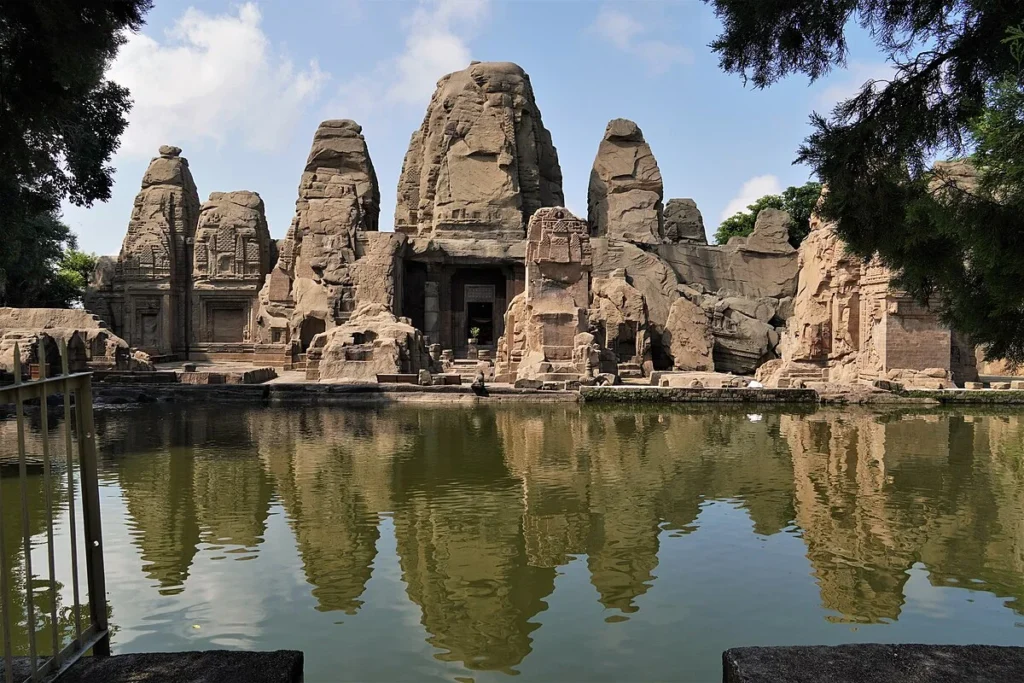
The Bathu Ki Ladi temples, or simply “Bathu Temples,” are a group of intricately carved stone shrines built in the Nagara style of Hindu temple architecture. The word “Ladi” means row, and indeed, these shrines appear to form a linear string—like divine pearls on the floor of a flooded valley.
The temples are primarily dedicated to Lord Shiva and Goddess Parvati, though carvings of other deities like Lord Vishnu, Ganesha, and Kali are also found adorning the walls.
But what sets Bathu Ki Ladi apart isn’t just architectural brilliance—it’s their annual resurrection. For most of the year, they lie underwater, submerged by the Pong Dam Reservoir, also known as the Maharana Pratap Sagar, one of the largest artificial lakes in northern India.
Then, like clockwork, each year between March and June, the water recedes—and the temples return, stone by stone, spire by spire.
A Glimpse into the Past: Myths and History
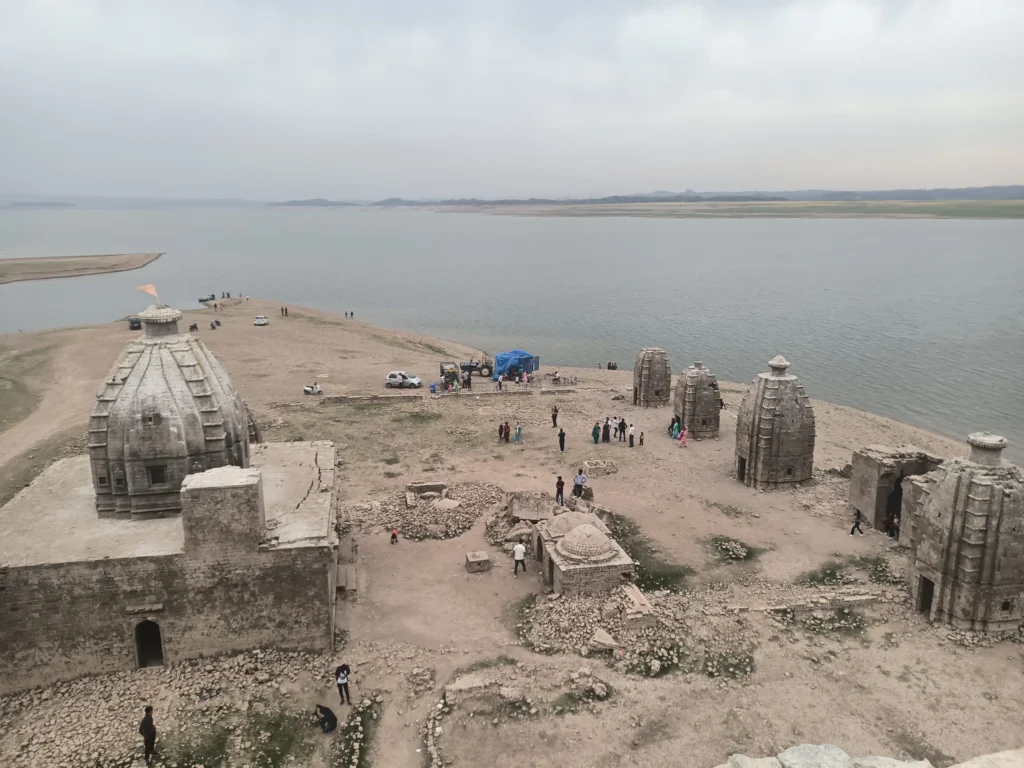
While the exact date of the temples’ construction remains debated, scholars attribute them to the Hindu Shahi dynasty around the 8th–10th century CE. The massive stones used—known as Bathu stone—have survived centuries, water erosion, and silence.
However, local legends take the story much further back. One of the most popular beliefs is that the Pandavas—the five warrior brothers from the Indian epic Mahabharata—attempted to build a staircase to heaven here during their exile. That mythical staircase, partially complete, is said to be visible even today near the temple base, carved directly into the rock.
This dual narrative—myth and history intertwined—gives Bathu Ki Ladi an aura unlike any other heritage site in India.
How They Were Submerged
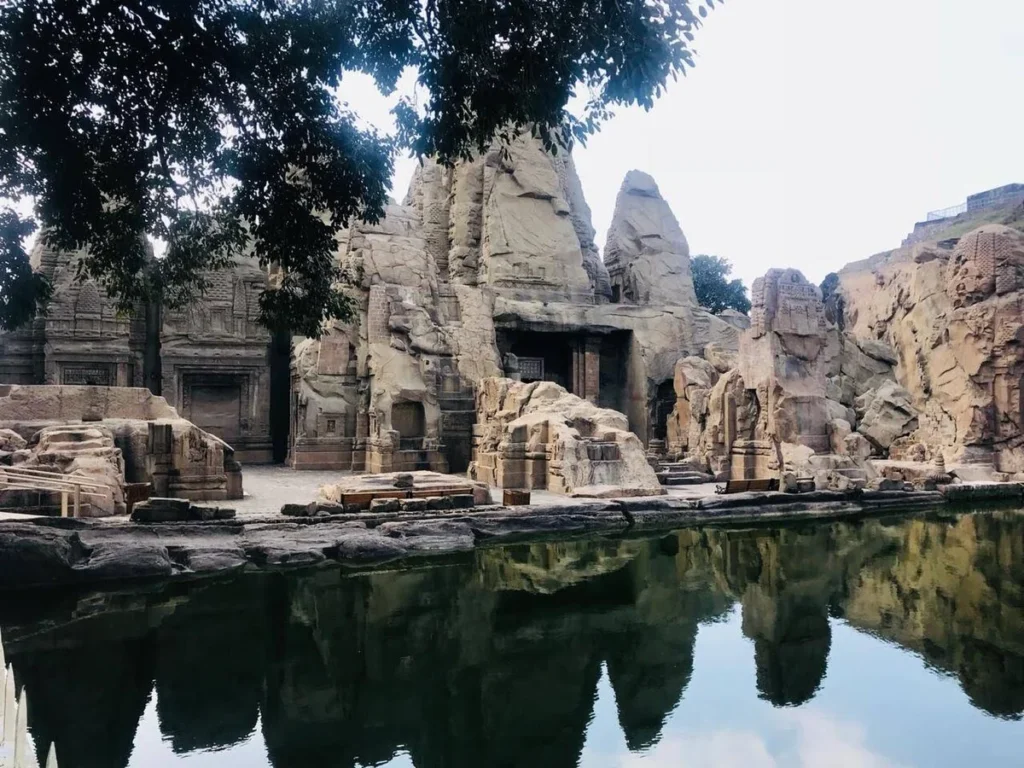
The Bathu Temples remained largely unknown outside Himachal until the 1970s, when the Pong Dam (Maharana Pratap Sagar) was built across the Beas River. This massive reservoir flooded dozens of villages and submerged the entire temple complex underwater, except for the tallest spires of the central temple.
Unlike many submerged sites that are forgotten forever, Bathu Ki Ladi was not lost—it became seasonal. Now, for 3–4 months every year, when the reservoir water recedes due to dry seasons and controlled outflows, the temples emerge once again.
It’s this cycle—of hiding and reappearing—that lends them their mystique.
How to Reach Bathu Ki Ladi Temples
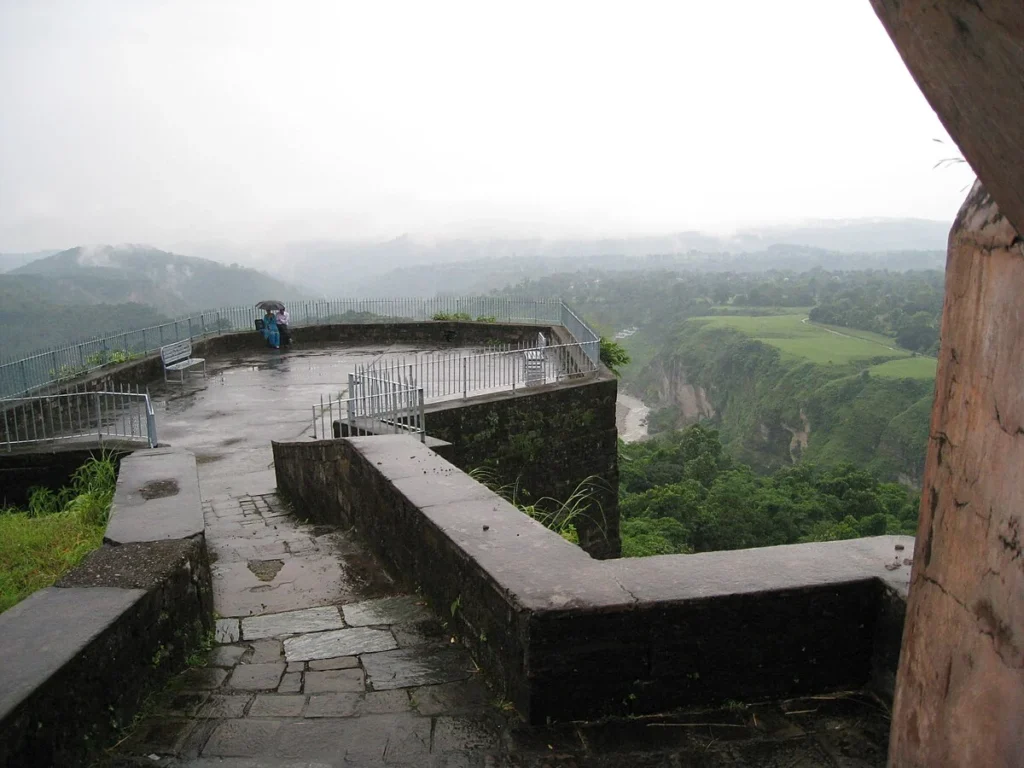
Location:
- Located in Kangra district, Himachal Pradesh
- Near Jawali, Dhameta, and Nagrota Surian villages
Road Way:
- From Dharamshala: ~60 km
- From Pathankot: ~70 km
- Local taxis and buses connect Dhameta and Jawali to nearby cities.
By Train:
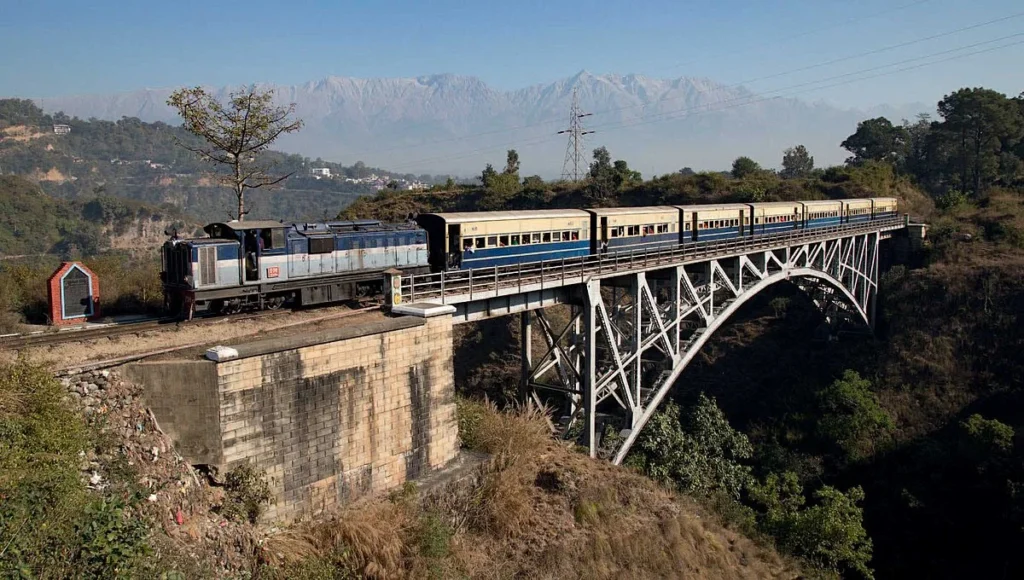
- Nearest major station: Pathankot (well connected from Delhi, Amritsar, and Jammu)
- From Pathankot, hire a taxi or take a bus to Jawali or Dhameta.
Airway:
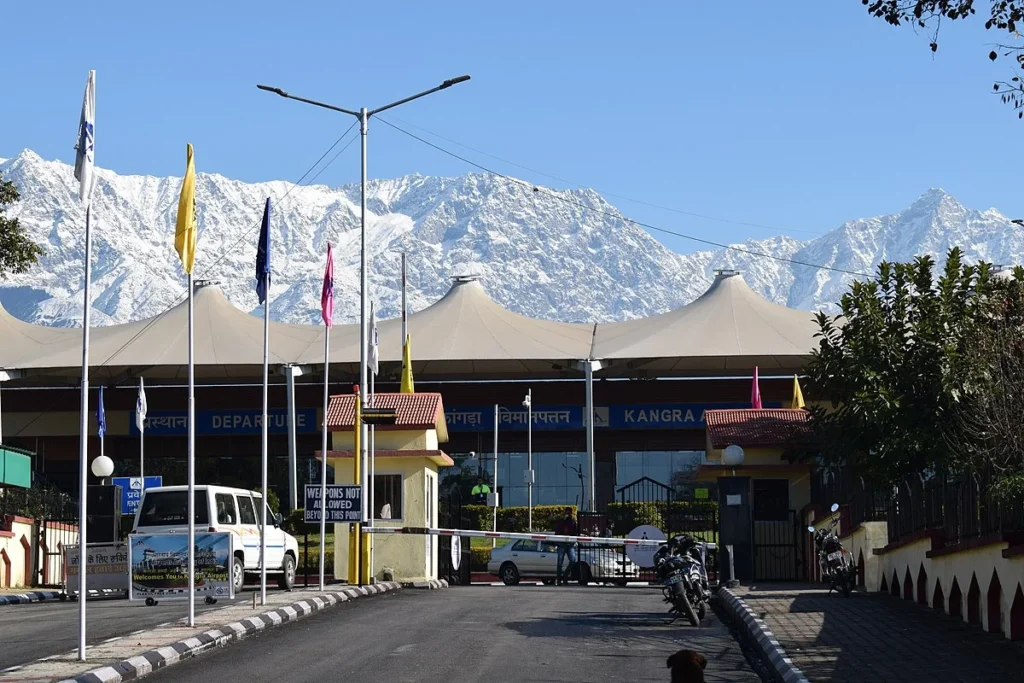
- Nearest airport: Gaggal (Kangra) Airport, ~50 km away
- Flights available from Delhi and Chandigarh
By Boat:
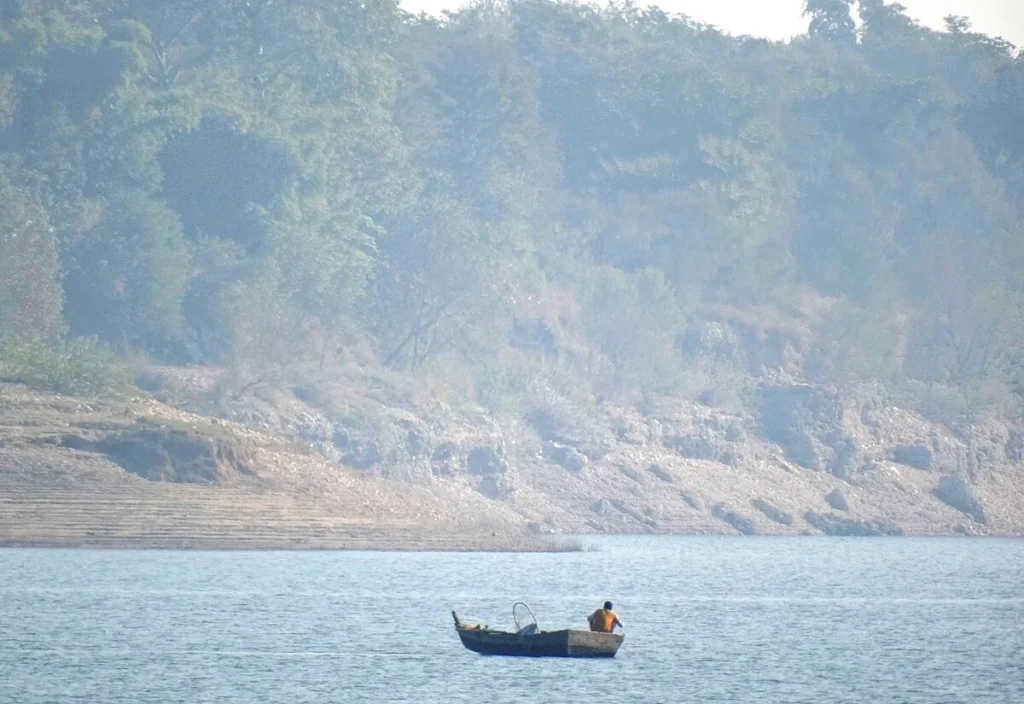
During high water levels (February to early March), the temples are accessible only by local boats, which operate from nearby villages like Guglara, Nagrota Surian, and Sugnara.
Pro Tip: Visit early in the morning for calm water reflections and fewer tourists.
Best Time to Visit
The ideal window to visit Bathu Ki Ladi is between March and early June, when the temple complex is fully or partially revealed due to receding reservoir levels.
- July–February: Entirely submerged under water
- March–April: Slowly emerging; best for boat photography
- May–June: Fully accessible on foot; great for exploration
Significance of the Temple
Aside from their unique seasonal visibility, Bathu Ki Ladi holds importance for both spiritual and cultural reasons:
- Spiritual Pilgrimage: Devotees often visit the temples to offer prayers during the brief period of emergence. As there are no full-time priests, devotees conduct their own puja.
- Mythical Connection: The association with the Pandavas lends epic importance, particularly the belief that the stairway to heaven lies incomplete here.
- Architectural Resilience: Despite decades of submersion, the structures remain strong—proof of ancient engineering brilliance.
Lesser-Known Facts About Bathu Ki Ladi
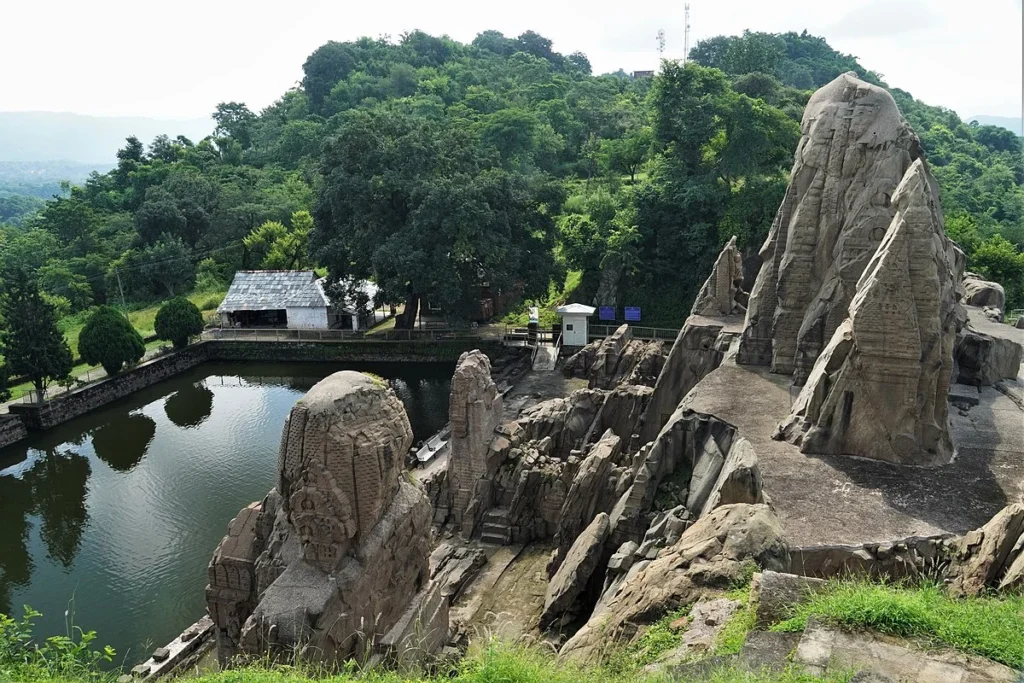
- Birdwatcher’s Heaven: The temples lie within the Pong Dam Wetland Reserve, which attracts over 200 migratory bird species, including bar-headed geese, cranes, and flamingos during winter.
- Self-Purifying Water: Locals claim the temple waters, especially near the sanctum, have healing and purifying properties due to their constant submersion.
- No Priests Stationed: Unlike most ancient temples, Bathu Ki Ladi has no resident priest. Worship here is informal, intimate, and deeply personal.
- Unexplored Archeological Value: Despite its uniqueness, no extensive ASI excavation has been undertaken, which leaves many of its secrets still buried under the lakebed.
- Festival-Free Fame: The temple doesn’t host large-scale religious festivals, yet draws a devoted crowd each year solely through word-of-mouth and spiritual pull.
What to Expect on Your Visit
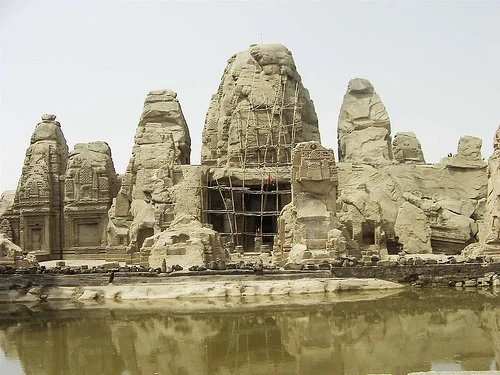
When you finally see it—after navigating back roads, hopping a boat, or walking across a drying lakebed—you’ll witness a temple emerging from still water like a memory reborn.
The complex includes:
- A main central Shiva temple, flanked by smaller shrines
- Intricately carved stone walls and spires
- Pillars half-covered in moss and lichen, silent but not forgotten
- The so-called “Stairway to Heaven,” now more metaphorical than literal
Visitors often sit in silence, walk barefoot over stone, or photograph the reflections that dance across the remaining puddles.
Visitor Tips
- Carry drinking water and snacks—no shops are nearby
- Wear non-slip footwear for walking on algae-covered stones
- Photography is allowed, and best during golden hours
- Respect the site—do not litter or deface the stones
- Stay cautious during boat rides, especially with children
- Bring binoculars if you’re a birdwatcher
Final Thoughts
In an age of overexposed travel destinations, the Bathu Ki Ladi temples remain gloriously underexplored. Maybe it’s the remoteness. Maybe it’s the seasonal silence. Or maybe it’s something more mysterious—something sacred that’s not found in temples above ground.
It’s not just about what you see when you visit Bathu Ki Ladi. It’s about what you feel—the awe, the quiet, the goosebumps when ancient stones reemerge to tell stories you didn’t know you needed to hear.
So if you ever find yourself in Himachal Pradesh between March and June, take the road—or boat—less traveled. Let the water part, and let the past rise before your eyes.



